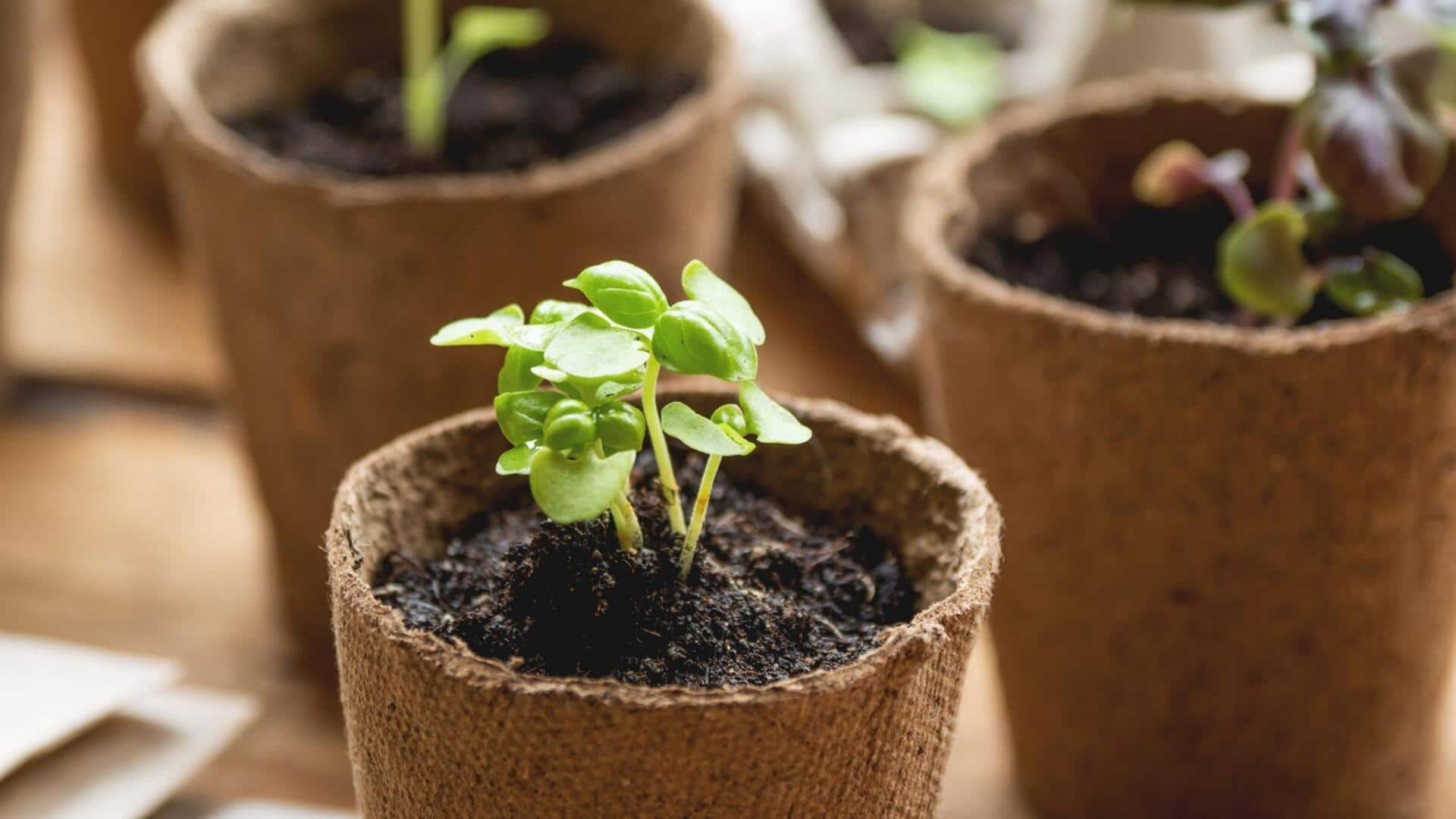
Eco-friendly gardening: Benefits of compostable plant pots
What's the story
Compostable plant pots are also fast becoming a favorite among eco-conscious gardeners, providing a sustainable alternative to plastic. These pots, made from coconut coir, peat, or recycled paper, break down easily, adding nutrients to the soil. Here's all about their benefits and how you can seamlessly incorporate them into your gardening practices.
Advantages
Benefits of compostable plant pots
Compostable plant pots has a number of benefits over traditional ones. They reduce plastic waste by decomposing in the soil naturally. While decomposing, they add nutrients to the soil, improving its quality and promoting healthy plant growth. Plus, you don't have to transplant them either since you can sow plants directly into the soil with their pot, reducing disturbance to the roots.
Material selection
Choosing the right material
When choosing compostable plant pots, look for those made of coconut coir or recycled paper. Coconut coir is sturdy and holds moisture efficiently, making it a perfect choice for seedlings. Pots made from recycled paper are lightweight and easy to manage but can require more frequent watering due to faster decomposition rates. Evaluate your gardening requirements to pick a material that suits your planting goals.
Budgeting
Cost considerations
Though compostable plant pots may appear to be more expensive than plastic ones, they can save you money in the long run by enhancing soil health and minimizing waste disposal costs. Prices differ depending on the material and size; small coconut coir pots can cost $1 each while larger ones could be $5 each. Look into bulk purchasing options for further savings if you plan on doing a lot of planting.
Practical tips
Tips for successful use
To reap maximum benefits from compostable plant pots, make sure you water them properly, as some materials dry out faster. Also, keep track of decomposition rates; if a pot breaks down too quickly before it's time to transplant, use a protective outer layer like burlap fabric temporarily. This way, you can make adjustments without significantly disrupting root systems during transitions.